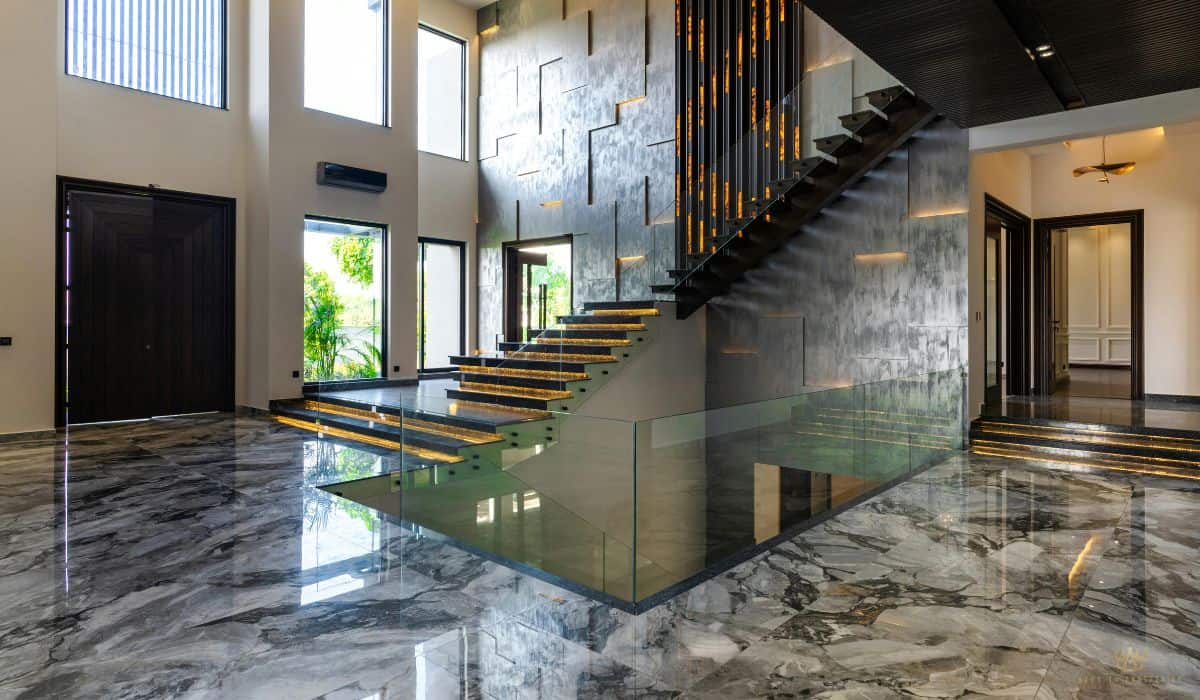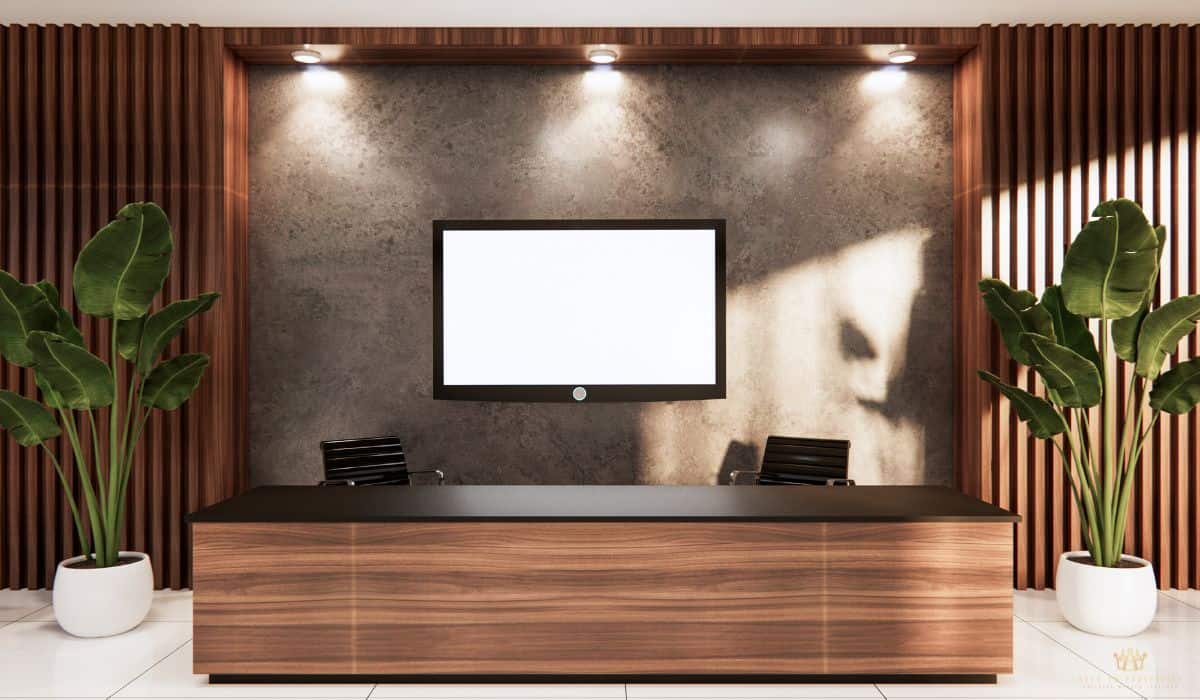Right now, nearly 485 million square feet of US office space sits underused, enough to eclipse all the office space leased in the last 10 years by 22%. That’s a staggering opportunity for building owners ready to rethink their assets.
The right repositioning strategy for commercial buildings can turn stagnant properties into thriving hubs, but it demands more than fresh paint.
From our experience, success hinges on understanding shifting market demands, from hybrid work trends to tenant types craving flexibility and premium finishes.
This guide unpacks how to transform commercial properties with smart upgrades, conversions, and a clear design vision, because in today’s real estate landscape, standing still isn’t an option.
For those exploring value-add commercial real estate vs. development, the focus shifts from ground-up projects to reinventing what exists.
Up next, we’ll break down a multifamily property value-add renovation strategy for residential conversions. Meanwhile, our pillar page dives deeper into crafting a winning value-add commercial real estate strategy across asset types.
Short Summary
- A solid repositioning strategy for commercial buildings begins with understanding tenant needs in a hybrid work world.
- Full-building transformations should align with the surrounding neighborhood and use premium finishes like gray veined marble flooring and walnut herringbone floor to boost perceived value.
- Converting parts of a building’s stack to life sciences, residential, or retail can respond to changing market demands and attract new tenants.
- Strategic investments focused on high-impact upgrades and thoughtful architecture can help building owners remain competitive, even in times of high interest rates.
Revitalizing Office Buildings: Core Elements Of A Successful Repositioning Strategy
Breathing new life into older office buildings takes more than a fresh coat of paint. A strong repositioning strategy for commercial buildings needs to meet shifting expectations, especially as work habits and market demands continue to evolve in 2025.

Hybrid Work Models Changed The Office Game
Hybrid work isn’t a passing trend. It’s the new baseline. Office footprints are shrinking, but that doesn’t mean they’re less valuable. It just means office space needs to work harder.
We’ve seen how open-plan layouts with small breakout zones work well for tech tenants, while legal firms still want traditional private offices.
In one situation, shifting an underused floor into flexible prebuilt suites helped attract smaller teams who didn’t need full-time desks but valued occasional in-person collaboration.
Start With A Blank Slate
Sometimes, the best move is a full reset. Think of it like clearing the board, knocking down partitions, pulling outdated finishes, and giving the building a clean foundation to build on.
For example, clearing out a cluttered floor plan can make way for a fresh design vision that matches current tenant expectations. This simple reset is a huge factor in repositioning the property to attract more flexible tenant types.
Different Tenant Types, Different Needs
Each tenant type brings its own set of expectations. Life sciences tenants need better HVAC and space for lab equipment. Creative firms want light-filled, open spaces. Legal and financial tenants usually need enclosed offices and security upgrades.
When evaluating a commercial property, it’s smart to build out test-fit plans based on at least three or four of the different tenant types you want to attract. That way, you know early what adjustments are needed in the building’s stack.
Upgrades That Speak To Prospective Tenants
Functional improvements like HVAC, elevators, and energy efficiency still matter. However, it’s the modern amenity upgrades that often seal the deal. Think lounges, coffee bars, or even fitness areas.
Adding gray veined marble flooring in lobbies or dark walnut floors in key tenant spaces can create a premium feel that helps a building stand out. Even adding a walnut herringbone floor to just one demo suite can increase walk-throughs and interest.
Leasing Activity Increases With The Right Moves
Buildings that make these changes see results. In one case, after repositioning and refreshing common areas, a 60% occupancy rate jumped to 90% within 12 months.
If you think that’s luck, think again. It was understanding the needs of new tenants and aligning the commercial real estate offering to serve them better.
These changes show that smart building repositioning strategies aren’t just about looks. They’re about long-term value.
Transforming Commercial Properties: Beyond The Standard Repositioning Strategy For Commercial Buildings
Sometimes, a basic refresh isn’t enough. When the goal is to reposition the entire building, it’s about stepping back, seeing the big picture, and designing something that fits into the fabric of the surrounding neighborhood, not just the block it’s on.

Think Beyond The Lobby
True transformation means rethinking how a commercial property interacts with its environment. A ground-floor retail concept that spills into a plaza, or a rooftop lounge with skyline views, can completely change the vibe.
Here’s what a full-building approach might include:
- Converting upper floors to residential or life sciences use, while keeping lower levels for office space or coworking.
- Updating the street-level entrance to increase foot traffic and make the building’s profile more welcoming.
- Using landscaping, signage, and lighting to strengthen the visual connection between the building and the surrounding neighborhood.
In a past project, a building originally leased for standard office use was reimagined into a mixed-use property. A café opened on the ground floor, new signage was installed, and upper floors were built out with flexible suites. Leasing inquiries tripled in under six months.
Premium Finishes Increase Perceived Value
Quality materials say a lot before anyone even steps into a suite.
- Dark walnut floors in common areas elevate the whole experience.
- Gray veined marble flooring in restrooms and elevator lobbies adds a high-end touch.
- A walnut herringbone floor in select units gives the space a boutique, curated feel.
These aren’t just aesthetic upgrades, though. They help attract more people, encourage higher rents, and build long-term value.
Mixed-Use Conversion = More Revenue Streams
Not only does a mixed-use strategy modernize the property, but it also creates flexibility. Adding retail, apartments, or life sciences labs diversifies income and widens your tenant base.
A commercial real estate asset that relies on one anchor tenant can become more resilient by dividing the space for multiple uses.
Creating A Strong Sense Of Place
The best repositioned commercial buildings feel intentional. Every finish, every corner, should serve a purpose and reflect a strong sense of who it’s for.
Start by defining your ideal tenant types, then shape the environment to serve them. That could mean brighter corridors for creative agencies, or soundproofed nooks for legal teams.
The result? A repositioning strategy that doesn’t just upgrade a space; it redefines it.
Adapting to Market Demands: Innovative Repositioning Approaches
Not every office building is destined to stay an office forever. As market demands shift, the smartest play can be converting space to uses that better reflect how people live, work, and shop today.

Converting Underutilized Office Space
When vacancy lingers, it’s time to ask: what else could this space be? Life sciences, residential, and retail are all strong candidates, especially in well-located areas.
A few examples of what might work:
- A dated office floor with high ceilings might become perfect for a lab-ready life sciences suite.
- Older upper floors that don’t meet Class A office space standards could be converted into apartments.
- Street-facing space that’s hard to lease could be activated with a café, gallery, or boutique retail tenant.
Evaluate The Building’s Stack For Conversion Potential
Every building’s stack is different. Some floors are more adaptable than others based on plumbing, light, and code compliance.
To evaluate the best use for each level:
- Identify underperforming floors with high vacancy or low demand.
- Assess which levels have the infrastructure to support a use conversion—labs need reinforced HVAC, for instance.
- Consider how new functions might connect vertically to existing uses.
In one case, a mid-rise property converted its top two floors into compact residential units and left the lower floors for commercial real estate uses. This mix drew new tenants and improved foot traffic across the board.
Prebuilt Suites Connect Disparate Settings
Prebuilt suites are a great way to test demand while saving on construction timelines.
For example, a few move-in-ready units on different floors, each designed with different tenant types in mind, can make it easier to lease space that might otherwise feel too segmented.
These suites can act as a bridge, connecting disparate settings within the entire building while appealing to a broader market.
Successful Pivots in Action
Buildings that adapt get noticed. A recently repositioned downtown tower added a mix of life sciences, retail, and flexible offices.
Within a year, it had not only leased out previously empty floors but also attracted visitors and businesses that reinvigorated the surrounding neighborhood.
When a repositioning strategy is tailored to evolving needs, it preserve value and at the same time builds it.
Strategic Investment: Making Informed Repositioning Decisions
Every upgrade to a commercial property should be intentional. With high interest rates and rising construction costs, building owners need a clear plan to determine where to invest and how much is too much.
Framework For ROI And The Highest Level Of Repositioning
Not every building needs a top-to-bottom transformation. Start by identifying your ROI potential, then match your strategy to your budget and market conditions.
A practical framework might include:
- Assessing current occupancy and potential rental lift post-upgrade.
- Reviewing market comps for similar commercial real estate in your area.
- Determining if your property supports a light refresh, partial reposition, or the highest level of redevelopment.
One example involved a mid-tier office building where a targeted investment in lobby finishes and corridor lighting created a noticeable value bump without overextending resources.

Design And Location Go Hand In Hand
Architecture matters. So does where the building is located. A well-designed lobby in a walkable neighborhood naturally attracts tenants, even when space is tight.
Think through:
- How your design vision complements or contrasts with nearby buildings.
- Whether your building has features like views, layout, or history that can be emphasized through renovation.
- The importance of matching finishes to your location’s vibe. A sleek modern design in a heritage district, for instance, may miss the mark.
Focus Investment Where It Counts
A full gut-renovation isn’t always the answer. Some finishes speak louder than square footage.
To get the most out of every dollar:
- Upgrade shared spaces with gray veined marble flooring, a relatively small move that boosts perception.
- Use walnut herringbone floor accents in demo suites to increase walk-throughs.
- Save budget by leaving back-of-house finishes basic but clean.
Balance Looks With Longevity
Landlords are often torn between flashy improvements and practical ones. The key is balance.
Energy-efficient building systems, elevator upgrades, and tech-ready infrastructure are just as important as stylish finishes. Together, these upgrades make the building more competitive and more likely to stand out in a crowded real estate market.
With the right investment, a building can be dressed up and futureproofed.
Final Thoughts
Keep it simple: building repositioning isn’t about throwing money at a property and hoping for the best. It’s about understanding the market, knowing your tenants, and making choices that bring real value.
Also, please keep in mind that the success of a repositioning strategy depends on factors such as location, building type, market conditions, and budget.
Please give us a call or a message if you’re interested in seeing some real world examples of successful repositioning strategies, including those that don’t rely on top-tier high-end finishes.
Smart updates, flexible space, and strong design go a long way in turning underused commercial properties into income-generating assets.Want more ideas to help you stay competitive in today’s real estate landscape? Explore our latest strategies, tools, and insights. Head back to the homepage and see what else we’re working on.
Frequently Asked Questions
What Is A Repositioning Strategy For Commercial Buildings?
A repositioning strategy involves updating a commercial building to better meet market demand and tenant expectations. This could mean improving finishes, converting uses, or adding amenities.
How Do I Know Which Part Of My Building Should Be Converted?
Start with a stack analysis—look at floors with low leasing activity or outdated layouts. Consider the infrastructure and how each level could better serve a different function like residential or life sciences.
Are Amenity Upgrades Really Worth The Investment?
Yes, if done strategically. Well-placed upgrades—like high-quality lobbies, fitness centers, or shared lounges—can help attract prospective tenants and boost leasing velocity.
Can Small Buildings Benefit From Repositioning Too?
Absolutely. Even smaller office buildings can gain traction with the right design vision, targeted updates, and a clear plan to meet local market demands.






